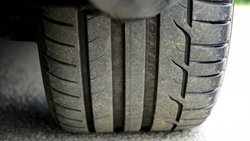Saving Money While Saving the Planet
No matter how new or well-maintained your vehicle might be, it should come as no surprise it can wreak havoc on the environment. According to the California Energy Commission, even minor changes to one’s car such as correctly inflating the tires could save U.S. drivers over $1 billion every year while reducing C02 emissions by 2.7 million tons. Here are some tips you can use to reduce your vehicle’s carbon footprint while saving some money on gas and repairs.
-
Check and Replace the Air Filters

All modern engines require a fresh flow of air in order to ignite the gas. When a clogged filter prevents air from entering the system, it can result in a gasoline-rich mixture that reduces the car’s efficiency. Checking and replacing the air filters is a simple way to ensure that your vehicle’s air-fuel ratio is right where it needs to be.
-
Maintain the Cooling System
Engines that run too hot use much more gasoline than those that are kept at the correct temperatures. Excessive temperatures also increase the risk of a catastrophic breakdown. In addition to checking the air filters, you should also check the coolant levels in your radiator. This will keep your car working at maximum efficiency and potentially increase your MPG by two or three percent.
-
Inspect Your Tires and Consider Upgrading to Eco-Friendly Tires
When it comes to the efficiency of a car or truck, few variables are as important as the tires. Tires with too much or too little air can cost a driver nearly 10 extra cents per mile while drastically

increasing their risk of a blowout. That is due to the additional resistance taking place when extra rubber comes into contact with the road. For those who are willing to invest a little bit of money into their vehicle, high-efficiency (low rolling resistance, technically speaking) tires often pay for themselves in as little as a few months due to the improved MPG.
-
Look Over the Spark Plugs
An old spark plug cannot efficiently ignite the gasoline mixture when it enters the engine’s cylinders. This can lead to misfires, unusual noises, and a good amount of wasted fuel. Each of your vehicle’s spark plugs should be relatively clean and free of any unusual debris. Spark plugs with burnt or damaged tips should be replaced immediately.
-
Take Care When Filling the Gas Tank

Not many drivers realize just how much fuel can be wasted when filling up a vehicle. Even just a few drops of spilled gas can be incredibly damaging to the local environment and add up to hundreds of dollars of wasted fuel over the course of a few years. When fueling up your car, you should also check the gas cap for any signs of visible damage such as cracks.
-
Inspect the Air Conditioning System
When a vehicle’s AC system is turned on, it puts quite a bit of strain on the engine. This can reduce the engine’s efficiency by upwards of 25 percent depending on the age and style of the vehicle. Taking a few simple steps such as parking in the shade, using reflective window coverings, and keeping the AC off whenever it is not needed will significantly reduce your car’s fuel consumption and carbon footprint.
-
Maintain the Fuel System
Every driver should take some time to check his or her car’s fuel system at least three or four times a year. This includes inspecting the filter for any signs of damage or extreme wear-and-tear. As a general rule, fuel filters should be changed at least once every two years. You should also have your fuel injectors cleaned by a mechanic two or three times a year to prevent buildup that could hurt your car’s efficiency.
-
Check the Emission System
Oxygen sensors tend to be one part of a vehicle that most drivers ignore until their “check engine” lights come on. These sensors are a vital component of the mechanical system, and a faulty

sensor can drop a vehicle’s efficiency by as much as 40 percent. Within most vehicles, the oxygen sensors can be checked with an on-board diagnostics (OBD) device. These can be purchased at most hardware and mechanic stores for just a few dollars.
-
Use Environmentally Friendly Fuel and Oil
Converting your vehicle to eco-friendly fuel sources such as biodiesel, renewable diesel or ethanol might be much easier than you think. Many gasoline vehicles (Flex-Fuel) are designed to run on up to 85 percent ethanol and most diesel engines can accept low-level (five to 20 percent) blends of biodiesel or up to 100 percent of renewable diesel. Not only are these fuel sources better for the environment, but they can often be purchased for less than traditional gasoline. Upgrading your vehicle to recycled oil is another excellent option to help save the environment.
-
Washing Your Car

Before washing your car or truck, you should carefully think about what products you are using and where the water is going. Many of the leading car washing companies now use “green” cleaners that are much better for the environment. They also must carefully follow the laws regarding where their used water goes. Drivers who plan on washing their own car should try to find eco-friendly products that will enrich their lawn instead of hurting it.
When it comes to maintaining a vehicle, a little extra work can have a big impact. Hopefully, these few tips will help you drive your car with the knowledge that you are doing everything in your power to keep your car efficient and eco-friendly.
There’s much to learn about taking car of your car, both for enhancing its efficiency and keeping up its performance. One resource you might check out is the extensive digital library of learning resources for future mechanics called ‘How Cars Work’ here.
